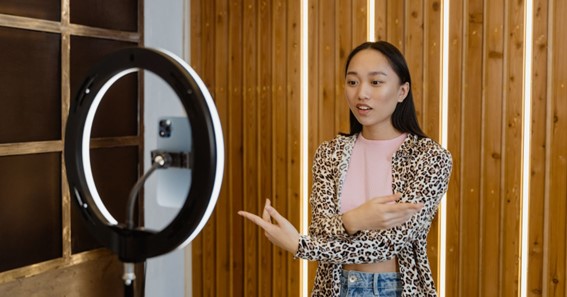Fashion has always been an ever-evolving industry, with trends coming and going at a dizzying pace. However, the advent of technology has led to an unprecedented shift in the way people perceive, create, and consume fashion. Social media influencers are at the forefront of this change, using digital platforms to connect with millions of followers and impact the global fashion scene.
In this blog post, we explore how technology is driving the rise of the influencer economy, and the ways in which social media influencers are reshaping the fashion industry.
The Role Of Mobile Apps In Influencer Marketing
Mobile apps have played a crucial role in the rise of social media influencers in fashion. One prime example is https://www.cbinsights.com/company/temuapp. By providing a seamless interface for influencers to showcase their work and reach out to potential sponsors, apps have made it easier than ever for fashion influencers to monetize their online presence and grow their audience.
The Power Of Real-Time Analytics
The ability to analyze data in real-time has been a game-changer for social media influencers and the fashion industry as a whole. By understanding their audience’s preferences, influencers can create content that resonates with their followers and drives engagement.
Analytics also help brands to identify which influencers are most likely to have a significant impact on their target audience, leading to more successful marketing campaigns and increased ROI.
Virtual Fashion Shows
In response to the COVID-19 pandemic, fashion houses have embraced technology and turned to virtual fashion shows to unveil their latest collections. Social media influencers have been instrumental in popularizing these events by creating hype, streaming them live, and offering their take on the latest trends.
This digital shift has made fashion more accessible and inclusive, allowing people from all corners of the globe to witness and participate in the excitement of high-fashion events.
The Growing Popularity Of Sustainable Fashion
As consumers become more conscious of their impact on the environment, the demand for sustainable and ethically-produced fashion has grown. Social media influencers have played a significant role in promoting this trend by showcasing eco-friendly brands and sharing tips on how to be more sustainable in everyday life.
Their influence has not only raised awareness about the importance of responsible fashion choices but has also encouraged brands to adopt more sustainable practices.
User-Generated Content
The rise of social media influencers has led to an influx of user-generated content (UGC), which is quickly becoming an essential part of the fashion industry.
From outfit inspiration to makeup tutorials, UGC allows followers to engage with their favorite influencers and learn from them. This content also provides valuable insights to brands about what their customers truly want, enabling them to tailor their products and marketing strategies accordingly.
The Emergence Of Micro-Influencers
While celebrities and mega-influencers certainly have their place in the fashion world, micro-influencers (those with a smaller, but highly engaged following) are increasingly making their mark.
Brands have recognized the value of partnering with these influencers, as their close-knit communities often have a higher level of trust in their recommendations. This shift has created opportunities for a more diverse group of influencers to thrive and find success in the fashion industry.
The Intersection Of Fashion And Technology
Influencers are not only impacting the way we perceive and consume fashion but are also influencing the creation of new products. Innovative brands are collaborating with influencers to co-create clothing lines, accessories, and even wearable technology.
This merging of fashion and technology has given rise to unique and cutting-edge designs that cater to the preferences of the digital generation.
Conclusion
The rise of social media influencers in the fashion industry has undeniably transformed the way we view, create, and engage with fashion. Technology has played a significant role in driving this change by providing the tools and platforms necessary for influencers to connect with their audiences and reshape the fashion landscape. From mobile apps to real-time analytics, virtual fashion shows, and the growing focus on sustainability, technology has enabled influencers to create a lasting impact on the industry.
As we continue to witness the emergence of micro-influencers and the intersection of fashion and technology, it is clear that the influencer economy is here to stay. With their unique ability to influence trends, inspire creativity, and foster a sense of community, social media influencers will continue to shape the future of fashion for years to come.
